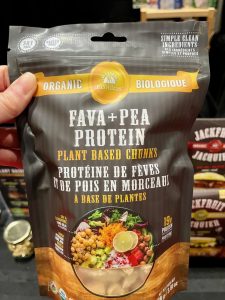
Pollen Food Allergy Syndrome (PFAS) is a type of food allergy and is also called Oral Allergy Syndrome (OAS). With a PFAS, people experience symptoms such as an itchy mouth or itchy throat when eating certain types of fresh fruits, vegetables, legumes and tree nuts. The proteins found in these foods are similar to the proteins found in pollen, and this “cross-reactivity” can cause the allergic symptoms within a few minutes after eating the trigger food. The allergic symptoms can happen any time of the year, but tend to be worse during pollen seasons.
Trigger Foods
The trigger foods depend on the pollen season and can also vary from person to person. Use the lists below as a guide to determine which foods may trigger your allergic symptoms. There’s no need for you to completely avoid all of the trigger foods if they are not causing any symptoms.
SPRING
If you are allergic to BIRCH, you may have allergic symptoms when eating:
- apple, apricot, carrot, celery, cherry, kiwi, parsley, peach, pear, plum
- almond, hazelnut, soybean, peanut – see your doctor, an allergist or go to the hospital if you notice mouth or throat itching from these foods as it may be a sign of a more serious allergy. According to Food Allergy Canada, it is possible though not common for PFAS to lead to anaphylaxis.
SUMMER
If you are allergic to TIMOTHY and ORCHARD GRASS, you may have allergic symptoms when eating:
- orange, peach, tomato, watermelon, white potato
LATE SUMMER / FALL
If you’re allergic to RAGWEED, you may have allergic symptoms when eating:
- banana, cantaloupe, cucumber, honeydew, watermelon, white potato, zucchini
FALL
If you’re allergic to MUGWORT, you may have allergic symptoms when eating:
- bell pepper, broccoli, cabbage, cauliflower, chard, garlic, onion, parsley
(Source: Food Allergy Canada; American Academy of Allergy, Asthma & Immunology)
What to do if you have Pollen Food Allergy Syndrome (PFAS)
- Keep track of which foods and which varieties of the food trigger your allergic symptoms. For example, if you have a birch allergy, you may only have symptoms with certain varieties of apples. Or you may have symptoms with apples but not with peaches.
- Cook or heat the trigger food before eating. Heat changes the protein structure of the food and may lessen symptoms. Avoid eating the trigger food fresh or raw.
- Peel the fruit or vegetable before eating since the protein is often concentrated in the skin. You can also try canned versions of the food.
- See your allergist or health care professional for additional advice if you have symptoms when eating peanuts or tree nuts.
The information in this blog is intended for educational purposes only and does not replace the advice recommended by your health care professional.

 These dried chunks are vegan, gluten-free and made from organic fava and pea protein concentrate. After soaking the chunks in hot water, they’re ready to use in recipes. The company also produces plant-based crumble and jackfruit cubes/shreds.
These dried chunks are vegan, gluten-free and made from organic fava and pea protein concentrate. After soaking the chunks in hot water, they’re ready to use in recipes. The company also produces plant-based crumble and jackfruit cubes/shreds. Made from soy protein and chickpeas, these little bite snacks pack in a blend of Middle Eastern flavourings. The company partnered with chefs around the world to create a range of products including plant-based Asian dumplings, Thai Basil Chik’n, and Butter Chik’n Bites.
Made from soy protein and chickpeas, these little bite snacks pack in a blend of Middle Eastern flavourings. The company partnered with chefs around the world to create a range of products including plant-based Asian dumplings, Thai Basil Chik’n, and Butter Chik’n Bites.

